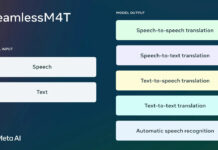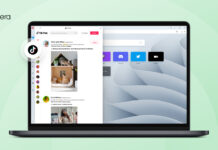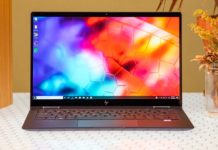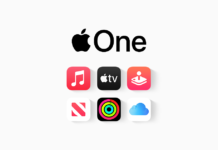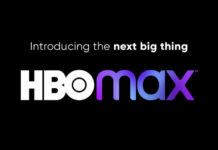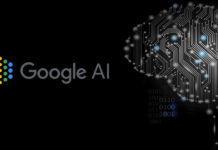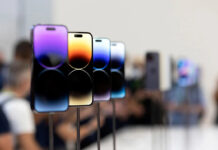ThisThis week we saw Sonos announce several new products, most significantly the Arc, which is the company’s first soundbar to support Dolby Atmos. Other new devices include the Sonos Five speaker and a refreshed Sub, and all three will only work with Sonos’ new S2 app that launches next month.
Below is a lightly edited excerpt of the conversation.
Nilay Patel: The new Arc, the Sub, the Five, all run S2. They cannot run the previous generation of the platform. They can’t run in S1.
Patrick Spence: Correct.
When you announced, “Hey, we’re going to slowly sunset S1 and when the new app and stuff rolls out, there’s some hardware that will be left behind,” there was effectively chaos. You put out a blog post, you apologized to people for miscommunicating. You’ve stuck to the guns, though. You’re splitting the platform into the new one and the previous one. Walk me through that drama from your perspective and why you’ve held onto this decision in this way.
Yeah. So one, there’s an aspect of trying to make sure that we are building for the future so we can support some of those new technologies like Atmos and some of the hi-res music that, we believe over the next few years, is going to be important to consumers.
So this has been obviously a lot of work internally to get us to where we got to in January. So we worked through it, we looked at everything that we could do. How do we keep living up to the promise that we set, and at the same time, position it for the future so that we can deliver all this new stuff? So we’ve worked through that.
And I think when it came to January, almost internally, we had gone through this over and over and over again. It created a situation where we hadn’t put the quality into that initial communication that we should have. And we tried to simplify it and we probably simplified it to a degree that didn’t make sense. Well, I know we did. And we didn’t clearly articulate what we were doing.
And when it was well-intended, because it was also well intended to help people understand, “Hey, this is coming right in June.” And that was back in January as opposed to, you know, doing it right at the time the new products came out.Advertisement
So we thought, “Hey, we’ll give people a heads up. They can start to think about this and think about what’s right for that.” Because for some customers, staying on S1 is going to be the right solution. For some, it’s going to be: “I’ve got to run a mix system.” There’ll be very few that run S1 and S2. And then for some it’s going to be: “I’m moving to S2,” and we’ve definitely seen that over the course of April.
So we went through all of that. We just didn’t land the communication the way we needed to. We left people with the impression that it would be bricked. And I just think as an industry, it’s so interesting that we’ve created this world where people think it’s just going to stop working because that was never our intent. You know, we’ve always had a team set aside to be doing the security patches and updates we need to and those kind of things.
And so, I think getting back so quickly was a learning to make sure people understood that and that they can stay on S1. And when they’re ready to go to S2, they can actually go and do that. And yeah, it’s not perfect as we work through this, but we also created that ability to read S1 and S2, what we call a split household if people choose to. We know we have some early adopters and really technical people in our base that will want to actually go do that. They may want to adopt Arc and run that separately and then they may want to read the rest their system on S1. So we’ve tried to create a series of options for our customers and that allows them to pace the upgrade to when they’re ready.
Correct. That’s right. We think that’ll be a small group of people that do that. We’ve had a small group in beta that had been doing that as well as we go through it. I ran it myself for a while like that. And what I foresee is that somebody might have Arc in their living room and run it that way. And the rest of their system is probably on S1 and they’re actually playing that. But again, I would say that’s going to be a small contingent of people.
Yeah, so I’ll tell you what started the Recycle Mode. You know, we were coming to a period where people would be upgrading. We’ve built these products there. Some of the products that we’re talking about are 10 to 15 years old. And so we could see that people were interested in trading up to the next generation. And our first our primary goal was “How do we responsibly recycle those products that they’re taking out of commission?”
And we were thinking more of the phone model, quite frankly, and we thought people would want to return it. So we said we will even pick up that product for you. Take it back and responsibly recycle it. Or you can go to the local responsible recycler. And we gave people the addresses, all of those kind of things.
I think this is where we’re not like phones and we’re not like any other consumer electronics. And it was an interesting learning because we listened and people said, “Hey, I can still use this one. I can give it to a friend, I can do these kind of things”. As we said, “You know what? You’re right. At the end of the day, you can.” And we are different than anybody else out there. So we’re going to get rid of this Recycle Mode. And if you do want to recycle it, we still have all that data that we’ll still take it back. And here’s your local recycling, because there are people that are doing that. But if not, you want to use it, then go ahead and be able to do that.
And so I think it’s a strength of the organization that we listen and we learn and then we evolve. And so that’s what we’ve done in that particular case. But it came from a place that was trying to think about the environment and making sure these things were responsibly recycled. But you know, we heard differently from customers and we adjusted.
You nailed it. That is absolutely it. The number of emails I received, you know, when the communication first came out in January around that very thing. “I’ve had a set of speakers for 40 years, 50 years.”
And the consumer, at the end of the day, it’s not their responsibility to understand that what we did was put a computer and speakers together. And so it’s made us mindful of what does that mean and trying to be as upfront as possible around the fact that these are different and there’s software in them.
But I think, you know, that’s not something that we’re going to single-handedly educate people on over time. People are learning as we go through. You know, we were on the forefront of this. But you know, you see it with a multitude of products now where you’ve introduced computing and computing components into everyday appliances and you start to see there’s the good of that from an experience side, and then there’s the bad of that in terms of the life cycle. But with what we’ve tried to do with S1, I think we’re trying to do what we can. And, look, it is a huge engineering achievement that we have products that have been around for 15 years and continue to make music and do these things. And it’s something that we’re super proud of. It is very different. The consumer electronics industry to the appliance industry or the pure passive speaker industry, it’s not that different.
And so we’re just in that kind of period where consumers are learning what it means for a product to be smart. I try to be as empathetic to that understanding and, look, we want our products to last as long as they possibly can through this. But there are some technical limitations we run into every once in a while. The good news is the first time we run into it is 15 years into building products. And so I feel good about that in the grand scheme of things.



